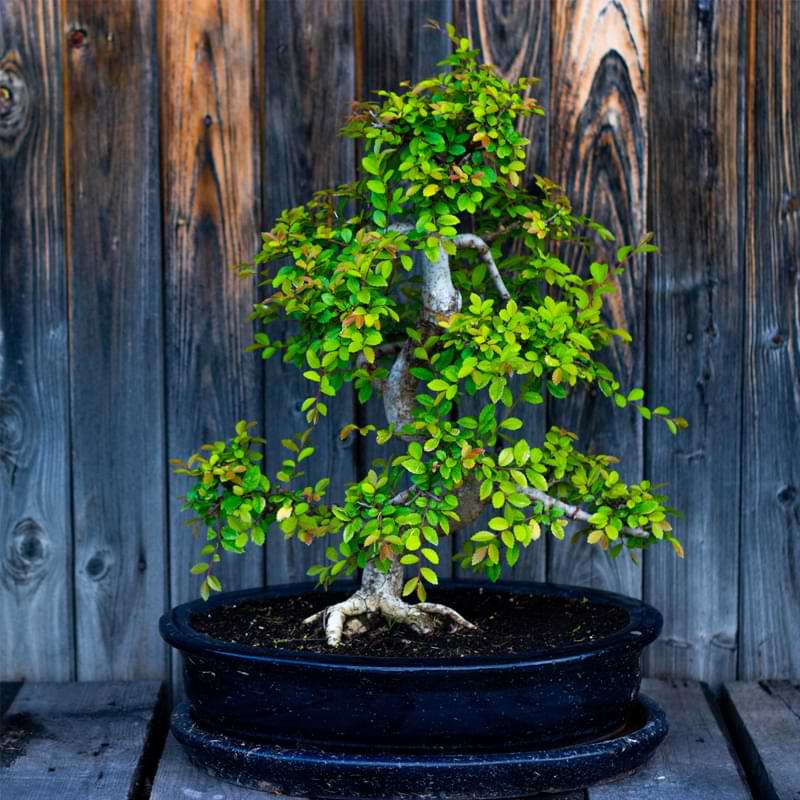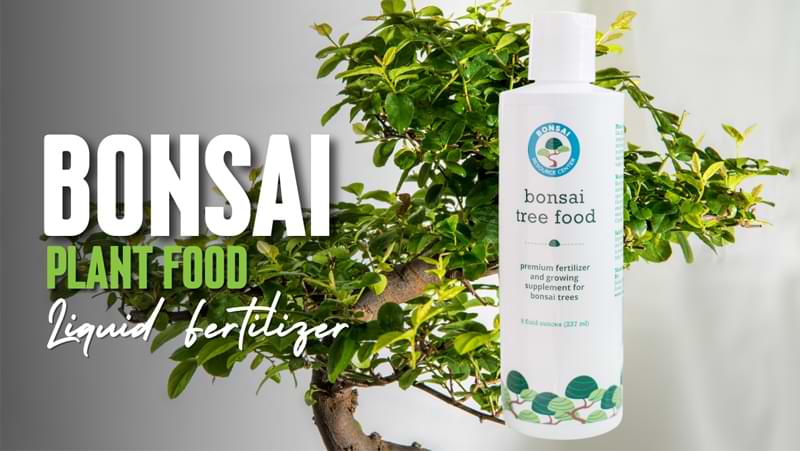The Chinese Elm Bonsai is definitely one to add to your ever-growing bonsai collection. It’s known for its stunning appearance and ease of care, and because of this it has become incredibly popular among bonsai enthusiasts worldwide. Taking care of a Chinese Elm Bonsai does require some knowledge and effort on your part, so let’s get into how to take care of this beautiful bonsai tree!
Trees Features
The Chinese Elm Bonsai is a popular tree species that originated in China, Korea and Japan. It’s known for its beautiful appearance, versatility and ease of care. The tree can grow up to 60 feet tall in the wild, but as a bonsai, it typically reaches no more than 2-3 feet.
One of the most distinctive features of this species is its attractive bark which varies from a gray-brown to reddish-brown with irregular texture patterns. Additionally, the leaves are small, oval-shaped and serrated along the edges. In Fall, they turn vibrant shades of orange or yellow before falling off.
Chinese Elm Bonsais also have an interesting branch structure that makes them stand out among other bonsai trees. They often form gnarled trunks with multiple branches extending vertically upwards at sharp angles giving them their unique character.
Keeping Chinese Elm Bonsai Indoors
Chinese Elm bonsai trees are versatile and can be kept both indoors and outdoors. However, indoor keeping requires more attention to ensure that the bonsai thrives in its indoor environment. For a bonsai tree that lives inside, it’s important to ensure all of the tree’s care requirements are met most of the time.
Are Chinese Elm Bonsai Easy To Care For?
One of the reasons why Chinese Elm bonsai are popular among beginners and experienced hobbyists alike is their easy-to-care-for nature. These trees are highly adaptable and can thrive in a variety of environments, making them ideal for those who may not have extensive experience caring for bonsai.
Now, they are not one of those plants that will thrive if you ignore it. They still need regular watering, fertilizing, pest control, pruning, and more. The care guide below has been created specifically for the Chinese Elm Bonsai, and will take you a long way in caring for your beautiful indoor bonsai tree.

Chinese Elm Bonsai Care
Keep these care tips in mind for your Chinese Elm Bonsai tree, and it will thrive in your home for years!
Temperature
The Chinese Elm Bonsai tree is hardy and can handle a wide range of temperatures, but they do have their limits. In general, Chinese Elm prefers moderate room temperatures between 60-75°F.
When the temperature drops below 50°F, it can cause stress to the tree and slow down its growth. If you live in a region with cold winters, it’s best to bring your Chinese Elm bonsai indoors or protect it from freezing temperatures. On the other hand, extreme heat can also be detrimental to your bonsai’s health. If the tree stays in an environment that is too hot, the leaves will begin to dry out and the tree will begin to decline in health.
Lighting
These trees require adequate light to thrive. However, direct sunlight can be harmful to the leaves and bark of the tree if the temperatures are also high. Therefore, it is best to place your Chinese Elm bonsai near a window that receives indirect or filtered sunlight.
If your home does not receive enough natural light, you can use artificial lighting in the form of fluorescent or LED grow lights. Position the lights above the tree at least 12 inches away from its foliage and keep them on for about 14-16 hours per day.
Watering
Watering is an essential aspect of Chinese Elm bonsai care. These trees require consistent moisture to thrive, but overwatering can be just as detrimental as underwatering. As such, it’s important to check the soil regularly and water only when the top layer feels dry to the touch. When watering, ensure that you saturate the entire root system thoroughly, then allow the excess water to drain from the drainage holes in the container.
Avoid letting your Chinese Elm bonsai sit in standing water for extended periods as this can lead to root rot and other issues. Similarly, avoid allowing the soil to become bone dry between watering sessions. Careful attention should be given towards maintaining appropriate levels of hydration for optimal growth and health of your Chinese Elm bonsai tree. Using a moisture meter will help you keep a close eye on the soil moisture levels.

Fertilizing
It’s crucial to use a balanced fertilizer with equal amounts of nitrogen, phosphorus, and potassium in a ratio like 10-10-10 or 20-20-20. During spring and summer when most trees are active growers, you should fertilize your Chinese Elm bonsai every two weeks with one of these balanced fertilizers.
You may also want to consider organic options like fish emulsion or compost tea for a more natural approach toward caring for your plants. Another option would be to treat your bonsai tree to an plant food that is specifically formulated for bonsai trees. This ensures your tree gets all the nutrients it needs in smaller doses that are easier for your tree to use.
Pruning / Training
Pruning helps maintain the shape of the tree, while also promoting growth in specific areas. Training is used to manipulate the shape and style of your bonsai tree over time. Both of these are important for your bonsai tree’s health, and to get your tree to look how you want it to.
When pruning your Chinese Elm bonsai, it’s important to use sharp, clean pruning shears to avoid damaging the bark or branches. You should remove any dead or damaged branches first before moving on to shaping cuts. Always make sure not to cut too much off at once as this can cause stress on your tree.
Training techniques include wiring, clipping shoots, and using weights or guy wires to bend branches into desired shapes. Wiring should be done carefully so as not to damage or cut into the bark. It’s important not to leave wire on for too long as it can begin digging into the wood as the tree continues to grow.
Insects / Pests
Insects and pests are one of the biggest concerns when it comes to caring for any bonsai tree, and unfortunately, the Chinese Elm Bonsai is no exception. Tiny creatures can quickly infest your tree, causing significant damage if left unchecked. Some of the most common pests you may see on your bonsai tree are:
- Spider mites: These tiny arachnids suck the sap from leaves, causing them to turn yellow and eventually fall off. To prevent spider mite infestation, regularly mist your tree with water and keep the humidity levels high.
- Scale insects: These small, brown or white bumps attach themselves to branches and leaves, sucking out nutrients from the plant. Use a horticultural oil spray to control their population.
- Aphids: Aphids cause curling of new growths and leave sticky honeydew behind as they feed on stems and leaves. Ladybugs are natural predators that eat aphids but you could also use a soap solution mixed with water as an organic pesticide.
It’s important to always inspect your Chinese Elm bonsai frequently for any signs of insect activity so you can catch problems early before they spiral out of control!
Propagation
Propagating Chinese Elm bonsai is a rewarding process that requires patience and care. One of the easiest and most common ways to propagate Chinese Elm bonsai is through cuttings. To do this, you’ll first need to identify the perfect branch to propagate. Look for one that is semi-mature, meaning no longer green, but still flexible. Make sure the branch looks healthy, too. take a healthy branch from your tree and make a clean cut just below a leaf node.
Remove all but the top two or three leaves on the cutting and dip it into rooting hormone powder before placing it in well-draining soil. Keep the soil moist and place the pot in a warm, bright location with indirect sunlight.
You can also propagate this tree by air layering. This involves creating an incision on a healthy branch, wrapping it with sphagnum moss, covering it with plastic wrap and securing it with wire. The only thing you need to do from here is ensure the sphagnum moss stays moist, and wait for roots to develop.
As new roots begin to develop within the moss, remove the plastic wrap and cut below where new roots have formed. Plant this rooted section in fresh soil mix and continue caring for your new plant as you would any other young tree.
Propagation will take some time, but seeing your own little saplings grow can be incredibly satisfying for every gardener out there!
Repotting Chinese Elm Bonsai
The ideal time to repot is in early spring, just before the growing season begins. When you see roots circling around the bottom of the pot or growing out of drainage holes, it’s a clear sign that it’s time for repotting. Another sign that it’s time to repot is if you notice the plant looks unwell, and you’ve ruled out all other possible causes.
To begin, carefully remove your tree from its current pot and gently loosen any tightly bound roots with a root hook or chopstick. Trim away any dead or damaged roots with sharp and sterile pruning shears.
Choose a new pot that is slightly larger than the previous one, but not too big as this can cause water retention issues. Always use a well-draining, bonsai tree soil mix. After replanting your tree into its new home, give it plenty of water and place it in partial shade for several days to help reduce transplant shock. Remember to always keep an eye on your newly potted Chinese Elm bonsai over the next few weeks as it adjusts to its new container and the new soil.
FAQ Chinese Elm bonsai
Is my Chinese Elm bonsai tree dead?
To determine if your tree still has life left in it, try scratching a small area of bark with a sharp knife. If there’s green underneath, then it means there’s still some living tissue present. When pruning your tree, if the inside of the cut-off branches looks woody and dry, then you may have a dead tree.
Ultimately, providing proper care such as adjusting watering habits and ensuring appropriate lighting conditions can help bring an almost-dead Chinese Elm bonsai back to life!
Do Chinese Elm bonsai lose their leaves in winter?
The Chinese Elm is a semi-deciduous tree, and will lose its leaves in the colder months, so don’t worry if you see your tree bare over the winter—it is simply recuperating some energy for excellent growth in the spring!
Join The Bonsai World
At The Bonsai Resource Center, our goal is to equip you with everything you need to grow and maintain a truly beautiful bonsai tree. This is our passion, and we want it to be yours as well! Whether you are a bonsai beginner or are looking to hone your skills, check out our other articles and visit our shop for all your bonsai needs!



